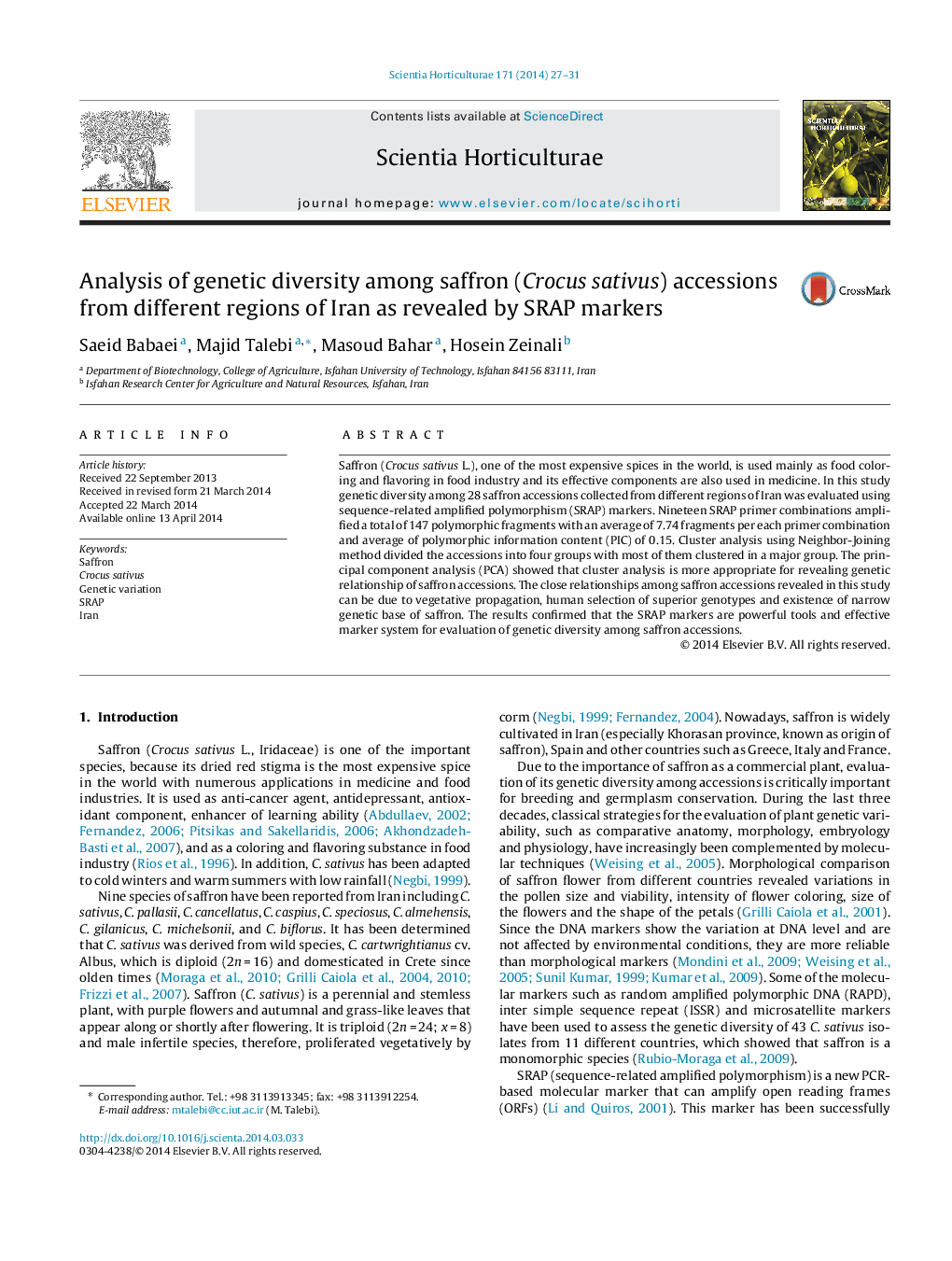| Article ID | Journal | Published Year | Pages | File Type |
|---|---|---|---|---|
| 4566777 | Scientia Horticulturae | 2014 | 5 Pages |
•Genetic diversity among Iranian saffron accessions evaluated using SRAP markers.•Cluster analysis divided the accessions into four groups with most of them clustered in a major group.•Close relationships among saffron accessions can be due to vegetative propagation and human selection of superior genotypes.•SRAP marker is an effective marker system for evaluation of genetic diversity among saffron accessions.
Saffron (Crocus sativus L.), one of the most expensive spices in the world, is used mainly as food coloring and flavoring in food industry and its effective components are also used in medicine. In this study genetic diversity among 28 saffron accessions collected from different regions of Iran was evaluated using sequence-related amplified polymorphism (SRAP) markers. Nineteen SRAP primer combinations amplified a total of 147 polymorphic fragments with an average of 7.74 fragments per each primer combination and average of polymorphic information content (PIC) of 0.15. Cluster analysis using Neighbor-Joining method divided the accessions into four groups with most of them clustered in a major group. The principal component analysis (PCA) showed that cluster analysis is more appropriate for revealing genetic relationship of saffron accessions. The close relationships among saffron accessions revealed in this study can be due to vegetative propagation, human selection of superior genotypes and existence of narrow genetic base of saffron. The results confirmed that the SRAP markers are powerful tools and effective marker system for evaluation of genetic diversity among saffron accessions.
